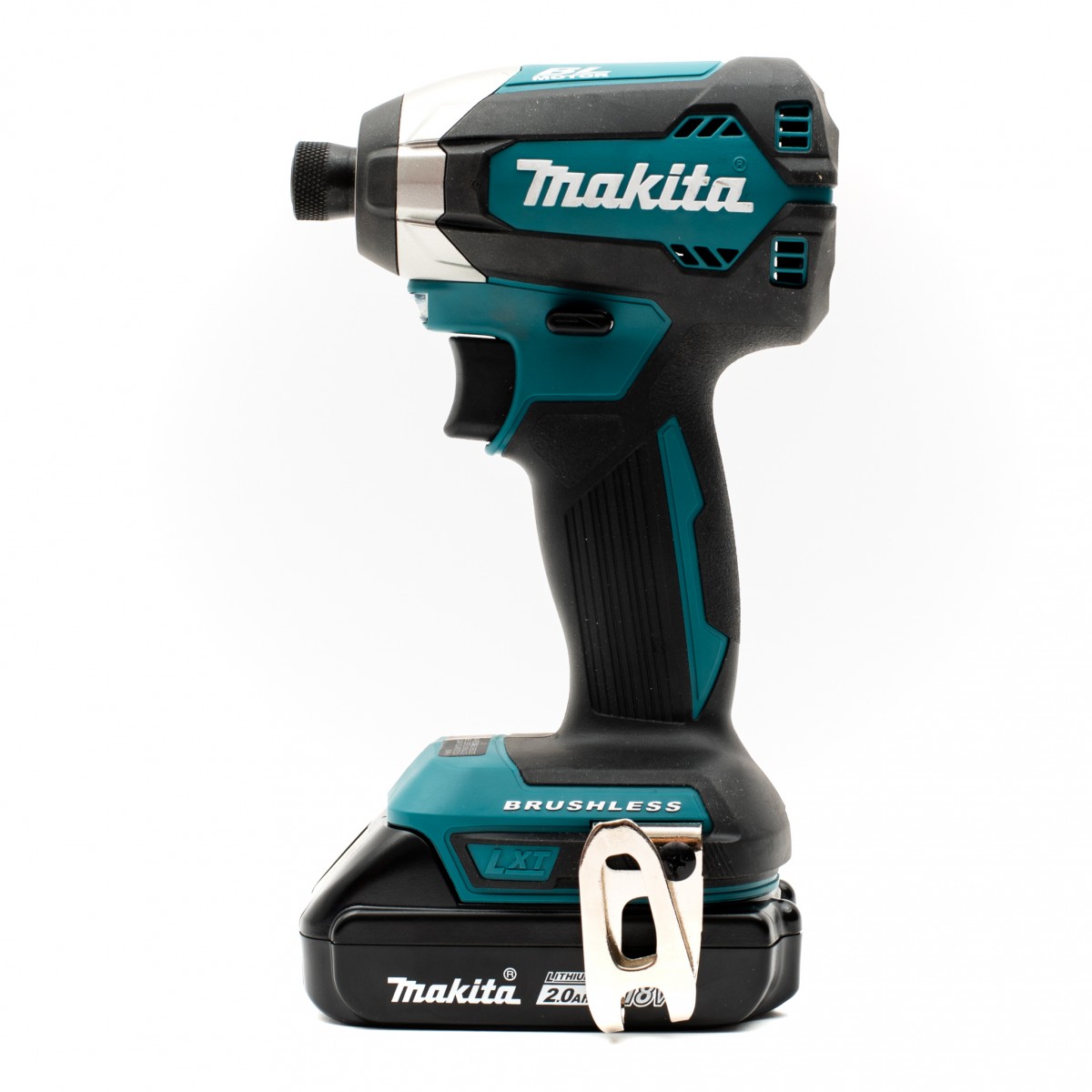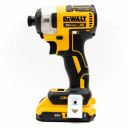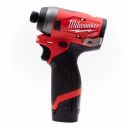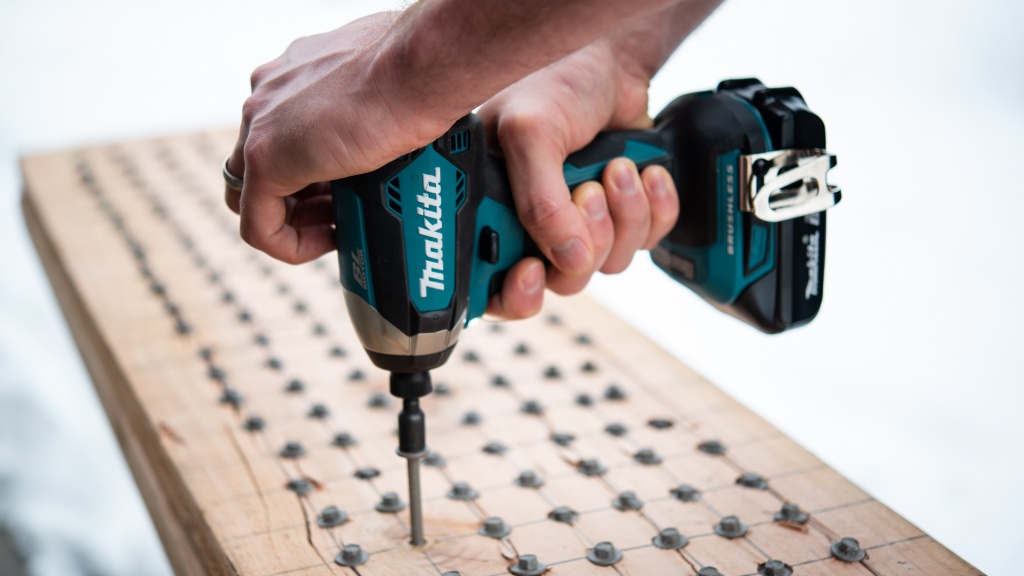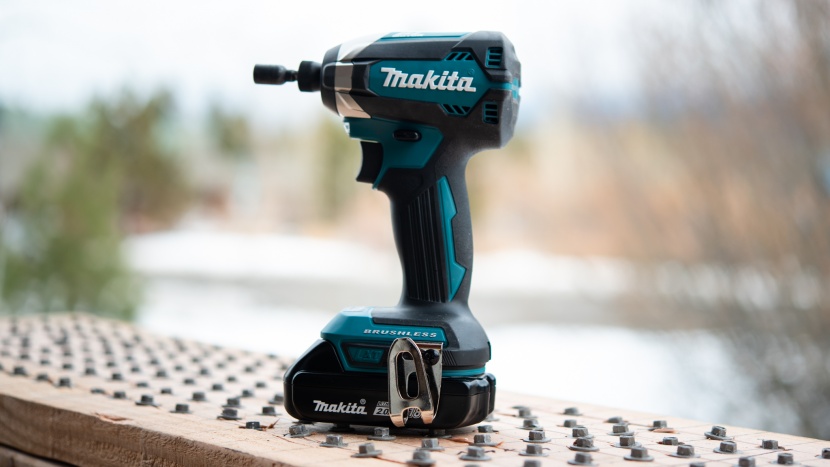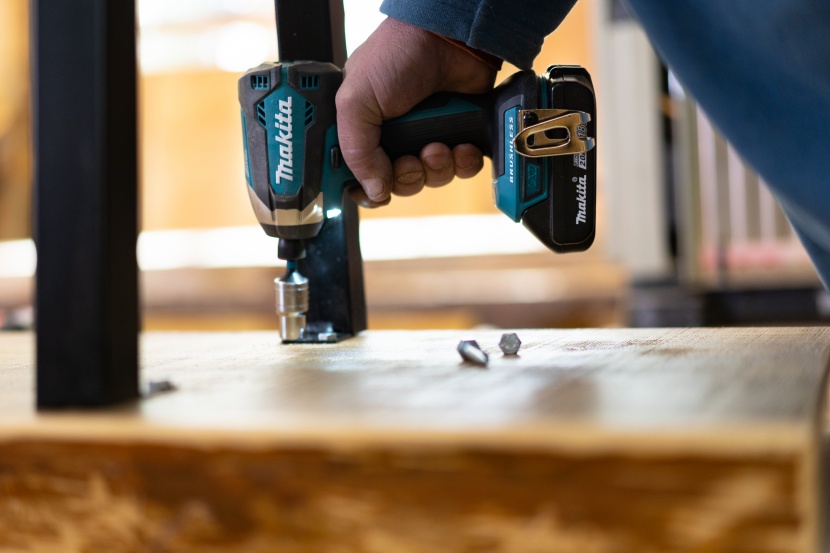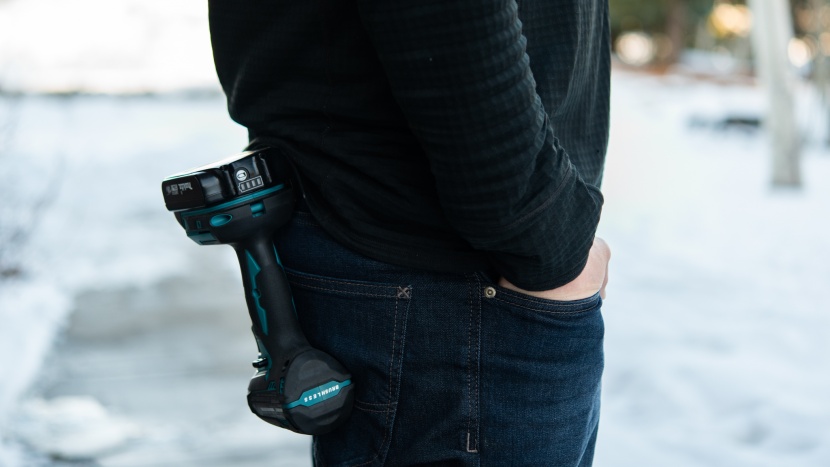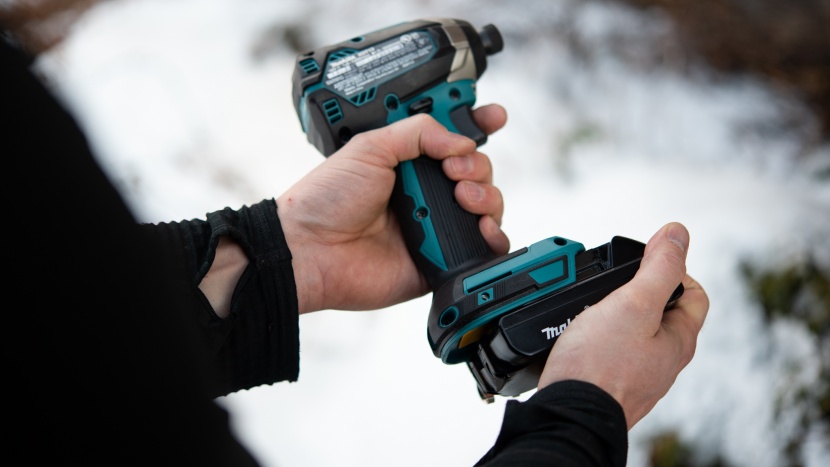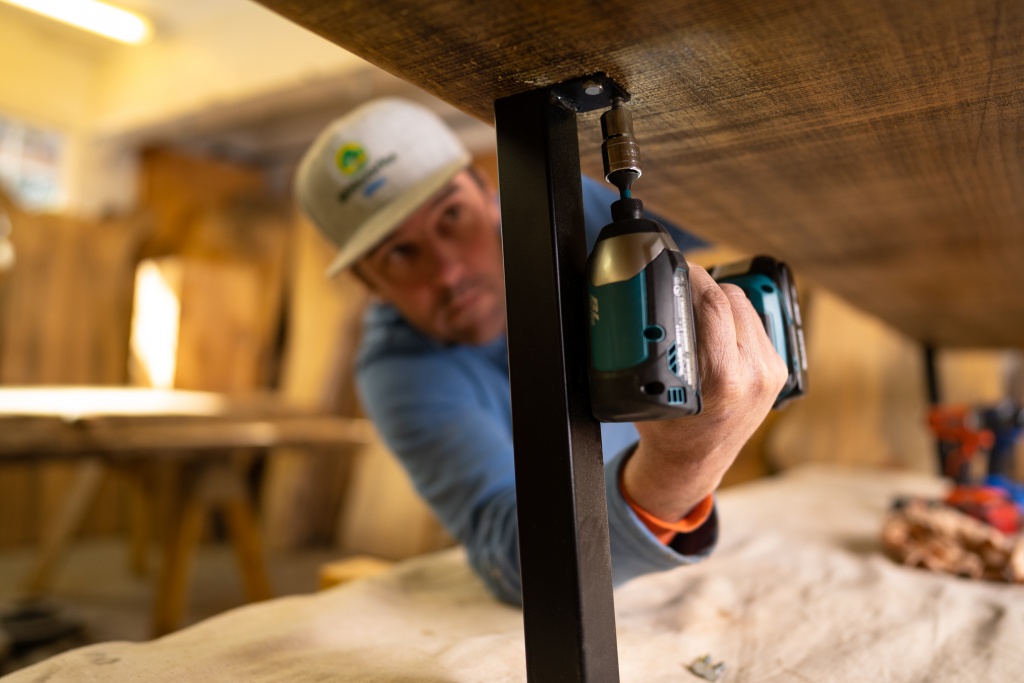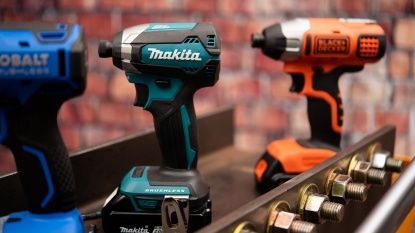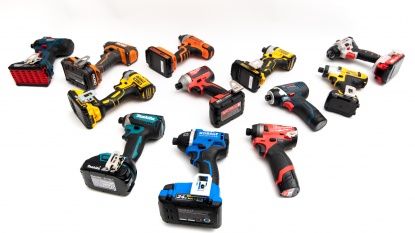Makita XDT13 Review
Our Verdict
Compare to Similar Products
 This Product Makita XDT13 | |||||
|---|---|---|---|---|---|
| Awards | Best Overall Impact Driver | Best Tool-Only Impact Driver | Best 12 Volt Impact Driver | ||
| Price | $129 List $99.00 at Amazon | $179 List $124.99 at Amazon | $135 List $119.97 at Amazon | $140 List $130.95 at Amazon | $149 List $149.00 at Amazon |
Overall Score  |
|||||
| Star Rating | |||||
| Bottom Line | If you want a high performance impact driver that can hang with the best, this is a good choice | If you want an ultra-fast and strong impact driver with an efficient battery, this model is the one | This impact driver offers fantastic speed and torque in a compact package | A solid addition for those that already have a bevy of DeWalt tools, but carries a heftier price tag than most | When it comes to 12-volt impact drivers, it's hard to beat the performance of this model |
| Rating Categories | Makita XDT13 | Kobalt XTR Max 24V | Milwaukee M18 Fuel... | DeWalt MAX XR DCF887B | Milwaukee M12 Fuel... |
| Speed (35%) | |||||
| Torque (25%) | |||||
| Convenience (20%) | |||||
| Battery (15%) | |||||
| Noise (5%) | |||||
| Specifications | Makita XDT13 | Kobalt XTR Max 24V | Milwaukee M18 Fuel... | DeWalt MAX XR DCF887B | Milwaukee M12 Fuel... |
| Average Measured Total Time for Lag Bolt Test | 21 seconds | 13 seconds | 16 seconds | 23 seconds | 37 seconds |
| Average Measured Time: Plywood Ledger Screw Test | 4 seconds | 3 seconds | 3 seconds | 4 seconds | 6 seconds |
| Average Measured Fastening Torque | 282 ft-lb | 300 ft-lb | 300 ft-lb | 238 ft-lb | 143 ft-lb |
| Average Measured Breaking Torque | 300 ft-lb | 300 ft-lb | 300 ft-lb | 300 ft-lb | 275 ft-lb |
| Average Measured Time: 3-2'x12' Ledger Screw Test | 2.8 seconds | 2.1 seconds | 2.0 seconds | 2.8 seconds | 3.7 seconds |
| Battery Test Screws Driven | 78 | 117 | 68 | 62 | 44 |
| Measured Length | 126 mm | 139 mm | 116 mm | 136 mm | 132 mm |
| Average Measured Decibels While Using | 97 dBa | 96 dBa | 99 dBa | 100 dBa | 97 dBa |
| Impact Driver Model # | XDT13 | KXID 124B-03 | 2853-20 | DCF887 | 2553-20 |
| Quick Bit Insert | Yes | No | Yes | Yes | Yes |
| Bit Holder | No | No | Yes | No | No |
| Multiple Fastening Modes | No | Yes | Yes | Yes | Yes |
Our Analysis and Test Results
What truly sets the XDT13 apart from the other models in our review is its exceptional torque, especially when loosening extremely tight or stuck fasteners. When it comes to breaking ceased or rusty nuts and bolts free, it handles the job easily and does it quickly.
Speed
For our first speed test, we stacked enough sheets of plywood to accommodate a 3-⅝" ledger screw. We then broke out the old trusty stopwatch, timed how long it took for the drivers to sink the screws, and repeated the test 4 times to get an average. The XDT13R was among the fastest in our review, with an average time of 4 seconds per screw.
Next, we used some ½" x 3 ½" lag bolts with appropriately sized 11/32" pilot holes drilled and timed how long it took to both drive the bolt and remove it. The Makita was among the fastest to drive the large bolt — it got it done in 15 seconds, while the average time for the test was 30 seconds. Likewise, it made quick work of removing the bolt and put up a great time of 6 seconds, which was twice as fast as the average of 12 seconds we calculated for the entire group of drivers.
Torque
To determine the torque that each model was capable of tightening a nut to and the maximum torque that the tools could break loose, we welded ½" Grade 8 bolts to an I-beam to be used for testing.
We started by letting each driver tighten a nut at its highest setting for ten full seconds and then slowly but surely turned our torque wrench up higher and higher until we could get the nut to move and noted the wrench setting. After three trials, the XDT13R produced an average of 282-foot pounds of pressure. Considering that several models in our review of top-ranked impact drivers failed to reach the 150 ft-lb mark, this is very impressive.
When it came time to test breaking power, we used the torque wrench again, but this time we used it to tighten the nuts to a given pressure, then used the impact drivers to loosen them if they were strong enough to do so. The Makita easily broke a nut free that we had tightened to 300 ft-lbs, the highest setting on our torque wrench. Not only did it loosen the nut, but it also did it instantaneously, whereas some of the others took several seconds to break them free from the bolt and I-beam eventually.
Convenience
To determine scores for convenience, we looked at any special features the tool might have — the bells & whistles, so to speak. We then took precise measurements of the length and weight of each model. We found some features we loved about the design of the XDT13R. But it also fell short in many ways, so it earned a middle-of-the-road score for the metric.
It has a bright light, but it does have a bit of weird refraction. The user can activate the light without actually engaging the driver by slightly depressing the trigger — this is convenient for instances in which you need to see the fastener or workspace before you're ready to tighten or loosen something.
The Makita is very short in length. We measured it at a mere 126mm, which makes it able to fit into tight spaces and easy to store. At 2 pounds without the battery, this model is also on the lighter end of the drivers in our review. It has a quick insert for bits on the driver itself, which is perfect for one-handed bit insertion, and also comes with a belt clip — a feature that we have come to love.
It's a bit of a let down that the Makita is lacking multiple RPM settings. It's nice to dial down the power for finish jobs but crank it to full strength for tougher tasks. The XDT13R lacks an auxiliary bit holder. It's a minor feature, and some people don't even use them if they have one. But a bit holder is an ideal addition for those who like to keep multiple bits on hand for projects or always stored with their tools.
Battery
To test battery life, we drove 14 3-⅝" ledger screws into stacks of 2x12 boards, then switched to a ½" x 3" lag bolt that we tightened to full depth and then reversed back out. The stopwatch stopped when the battery had nothing left.
The XDT13R had one of the longest-lasting batteries during this test. It made it through 4 complete sets, then finished the ledger screw portion of the 5th trial, then was able to sink the lag bolt before running out of juice while backing it out. This driver outperformed most of the field during our testing, so it received a great score for this metric.
Noise
To measure noise levels, we used a sound meter while driving ledger screws into 2x12 boards from a distance comparable to the noise the user would be experiencing while using the tool. After four trials, we took an average of the decibel levels, removed obvious outliers, and took an average of the volumes.
Unfortunately, nearly all the impact drivers in our review are painfully loud. The Makita produced an average of 97 dBa while driving ledger screws, which is lower than the 98 dBa average for the entire bunch of drivers.
But because other models have much lower readings, we couldn't give the XDT13 much of an impressive score for this metric. We suggest that our readers look up what kind of ear protection the manufacturer advises their customers to wear when operating power tools.
Should You Buy the Makita XDT13?
The Makita XDT13 is a great impact driver. Although it isn't the quietest or has all of the bells & whistles of some of the other models we've seen, it has a great battery life, tons of torque, and it's fast. Considering the price, it's a steal if you already own Makita tools with a compatible battery and charger.
What Other Impact Drivers Should You Consider?
The XDT13 is justly priced for the performance and offers a great value option. However, some may be turned off by the noisiness of this driver, especially if you commonly work in tight quarters. If you're looking for a fully-featured driver, our top choice is the award-winning Milwaukee M18 Fuel.


